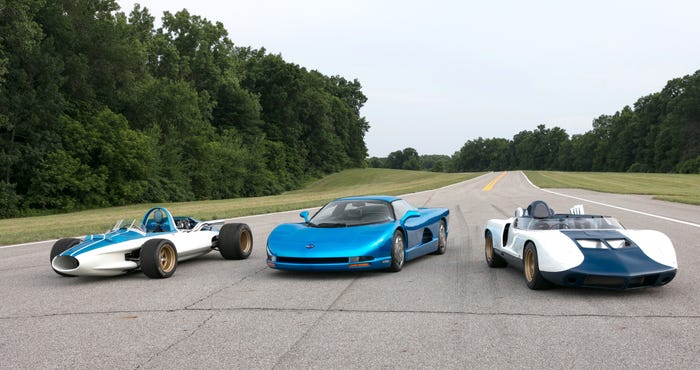Before it become a nostalgia model, the Chevrolet Corvette was a technical pioneer.

1960 CERV I, 1990 CERV III and 1964 CERV II (left to right). Image source: General Motors Co.
While Chevrolet launched the Corvette in 1953 using an assemblage of uninspiring off-the-shelf parts, including the old standby Stovebolt Six engine (rebranded with sidedraft carburetors as the Blue Flame Six), the car quickly became General Motors’ technology leader.
Zora Arkus-Duntov, Corvette’s first true chief engineer, pushed the application of the original small block V8 in 1955 and added Rochester Ramjet mechanical fuel injection in 1957. He developed the production Corvette into a legitimate Le Mans racer while GM design boss Bill Mitchell created the one-off Sting Ray Racer prototype in 1959.
Under Duntov, Chevy engineers produced testbeds like the mid-engine, open-wheel 1960 Chevrolet Experimental Research Vehicle (CERV) I, which looked like a mid-engine Indy Car a year before such a car debuted at The Brickyard. Duntov described CERV I as “a design without limit” and an “admirable tool” to instruct Chevy on “what to put in Corvette.”
The closed-wheel, open-cockpit CERV II of 1964 featured front and rear torque converters in a patented mid-engine all-wheel drive layout.
The 1990 CERV III was designed as more of a high-performance road car than as a racer, with the aim of developing mid-engine structures for a production model that never arrived. The twin-turbocharged double-overhead cam V8 in CERV III produced 650 horsepower, forecasting the muscle of forced-induction Corvettes like the supercharged 638-hp 2009 Corvette ZR1.
Finally, with the eighth-generation 2020 Corvette Stingray, Corvette fulfills Duntov’s dream of a mid-engine layout. Just as importantly, Corvette reclaims its mantle as a contemporary technology leader.
Dan Carney is a Design News senior editor, covering automotive technology, engineering and design, especially emerging electric vehicle and autonomous technologies.
About the Author(s)
You May Also Like





